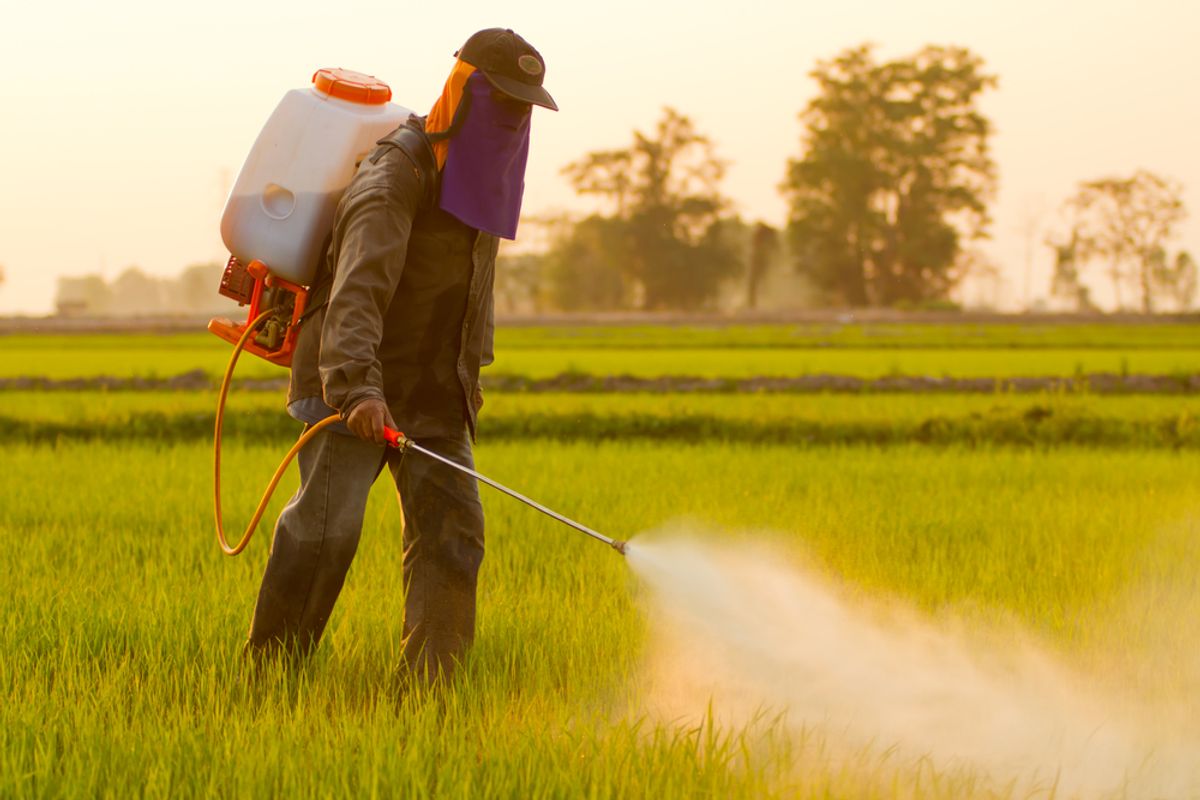Pregnant women living within a mile of fields treated with common pesticides have a 60 percent higher chance of giving birth to a baby with autism or other developmental delays, a new UC Davis study found.
The findings, Scientific American reports, are part of a massive research project undertaken to explore environmental pollutants as a potential risk factor for autism spectrum disorders. Previous studies of pesticide use in California have also established similar links, including one from 2007 finding that two pesticides, now banned, were associated with a sixfold increase in autism risk. This new study, which followed 970 children born in Northern California, looked at three classes of commonly used pesticides -- organophosphates, pyrethroids and carbamates -- and found disturbing evidence linking all three to either autism or development delays. Here's more from SciAm:
Children with mothers who lived less than one mile from fields treated with organophosphate pesticides during pregnancy were about 60 percent more likely to have autism than children whose mothers did not live close to treated fields. Most of the women lived in the Sacramento Valley.
When women in the second trimester lived near fields treated with chlorpyrifos – the most commonly applied organophosphate pesticide – their children were 3.3 times more likely to have autism, according to the study, published in the journal Environmental Health Perspectives.
Chlorpyrifos, once widely used to kill insects in homes and gardens, was banned for residential use in 2001 after it was linked to neurological effects in children. It is still widely used on crops, including nut trees, alfalfa, vegetables and fruits.
The study also is the first to report a link between pyrethroids and autism. Application of pyrethroids just prior to conception meant an increased risk of 82 percent, and during the third trimester, the risk was 87 percent higher.
That finding is particularly concerning because “pyrethroids were supposed to be better, safer alternatives to organophosphates,” said the study’s senior author, Irva Hertz-Picciotto, an epidemiologist who leads the UC-Davis project to investigate environmental and genetic links to autism.
The biggest known autism risks, SciAm notes, are hereditary: siblings of a child with autism are 35 times more likely to develop it themselves. And this study wasn't able to prove that pesticides cause autism.
But environmental exposures aren't negligible. “In any child who develops autism, a combination of genetic and environmental factors are at work. There’s an accumulation of insults to the system," explained Hertz-Picciotto. "What we’re seeing is that pesticides may be one more factor that for some kids may push them over the edge.”
To the extent that conclusions can be reached, as one autism expert noted, the study "suggests that exposure to farming chemicals during pregnancy is probably not a good thing."



Shares